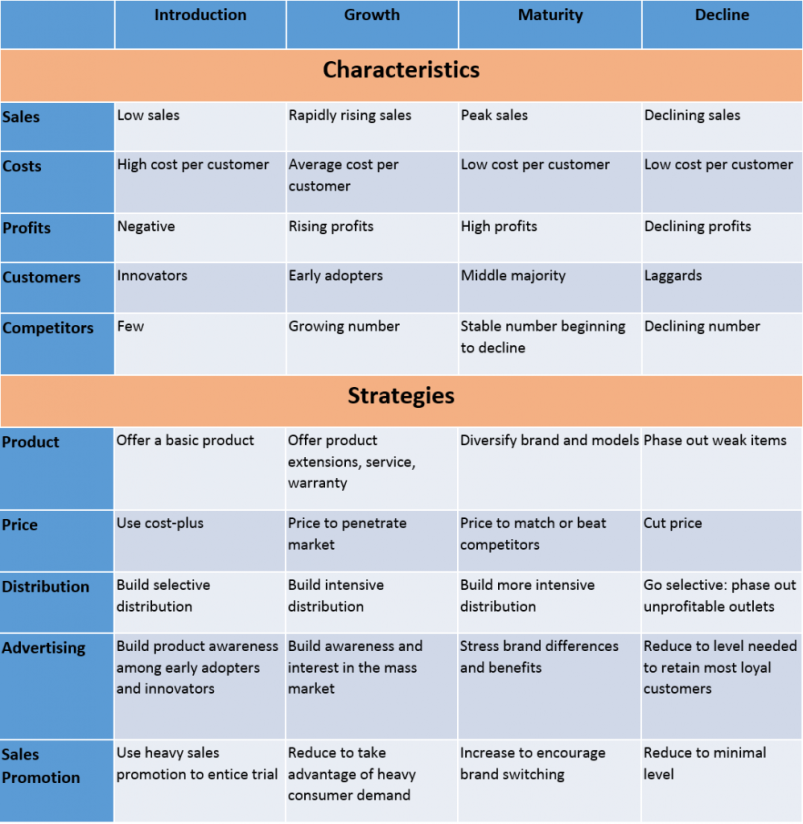Therefore, proper product life cycle strategies are critical. The company needs to pay more attention to its aging products to identify products in the decline stage early. Then, the firm must take a decision: maintain, harvest or drop the declining product.
The main objective in the decline stage should be to reduce expenditure and “milk” the brand. General strategies for the decline stage include cutting prices, choosing a selective distribution by phasing out unprofitable outlets and reduce advertising as well as sales promotion to the level needed to retain only the most loyal customers.
If management decides to maintain the product or brand, repositioning or reinvigorating it may be an option. The purpose behind these options is to move the product back into the growth stage of the PLC. If management decides to harvest the product, costs need to be reduced and only the last sales need to be harvested. However, this can only increase the company’s profits in the short-term. Dropping the product from the product line may involve selling it to another firm or simply liquidate it at salvage value.
In the following, all characteristics of the four product life cycle stages discussed are listed. For each, product life cycle strategies with regard to product, price, and distribution, advertising and sales promotion are identified. Choosing the right product life cycle strategies is crucial for the company’s success in the long-term.
